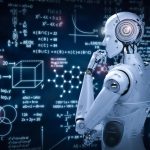Parallel-GPU training is a commonly used method for training deep learning models. Using deep learning effectively reduces training time due to the ability to parallelize calculations. However, training deep learning algorithms in an adequate amount of time would be impossible without robust GPU infrastructure.
Utilizing GPU parallelism helps deep learning experiments run faster on a cluster of GPUs. For example, a giant experiment can be run much quicker using this pool of GPUs instead of a single GPU because all those resources are pooled together.
Also Read – Why use Dedicated GPU Server for Machine Learning?
Even if you use a deep learning framework that does not support parallelism, you can still leverage multiple GPUs to run numerous algorithms or experiments in parallel (you can run each on a separate GPU).
How to select the right GPU for deep learning?
Intense deep learning tasks, like identifying many objects in an image or training with large amounts of data, can be highly challenging, even for GPU-based systems. So how can you select the GPU that satisfies your computational needs best?
- Memory bandwidth is the most critical feature of a GPU. Select a GPU with the highest bandwidth available within your budget.
- A GPU’s processing speed depends on how many cores it has. Especially when managing large datasets, be aware of this.
- The video RAM (VRAM) measures how much data can be processed simultaneously by a GPU. Consider checking how much RAM the algorithms that you are planning to run in your experiments require.
- Simply multiply the clock frequency by the number of cores to determine the GPU’s processing capacity.
What are the best metrics to evaluate deep learning GPU performance?
After acquiring it, you should evaluate your GPU system and adjust your configuration if necessary once it is suitable for your deep learning needs. You should assess the following key metrics when running experiments on GPUs.
Use of GPUs
Intensive GPU utilization is a vital indicator of a deep learning program. A GPU monitoring interface like NVIDIA-smi will provide easy access to this. In addition, the GPU usage percentage indicates how much time the deep learning framework spends using the GPU.
Also read – How Artificial Intelligence Works and Why GPU for AI?
Deep learning can be verified by monitoring GPU usage (by default, most deep learning frameworks will use the CPU). In addition, you can monitor real-time usage patterns to find inconsistencies in your code that might slow down the training.
RAM accessed by the GPU and its utilization
An intense deep learning process uses a lot of GPU memory, so the memory status of the GPUs is also a good indicator. The NVIDIA-smi program allows you to optimize many memory metrics for accelerating training.
Measures of memory performance, such as memory metrics, tell us, for example, how much time, in the past few seconds, the GPU memory controller has spent reading and writing to memory. Using other values, such as available memory and used memory, can provide insight into how efficiently deep learning experiments use a GPU’s memory. For example, by changing the batch size of training samples based on memory metrics, you can make sure training samples fit the available memory.
Thermal efficiency and power consumption
Power consumption determines how intensely the GPU is being used by the deep learning program, as well as the power consumption of your experiment. If deep learning is run on mobile or internet of things (IoT) devices, energy consumption is essential since mobile devices have limited power.
Know More – Dedicated Server USA
GPU temperature is closely associated with power consumption. Increased temperature causes electronic resistance to increase, which increases fan speeds and power consumption. In addition, when GPUs are strained under extreme thermal conditions, their performance is throttled, which slows down deep learning.
The time it takes to reach a deep learning solution
A GPU’s time to reach a working deep learning solution may be the most vital factor to watch for. Will you need to run your model more than once to achieve accuracy? When performing large-scale experiments, test your model on a GPU to determine how long training sessions take. Optimize GPU parameters, like mixed-precision and batch and epoch sizes. Based on the GPU you have, this will tell you how much time it will take you to reach a working solution.
Final thoughts
The GPU plays a fundamental role in deep learning projects and can significantly speed up training. This article discusses basic GPU concepts and how to select the right GPU for your project.
- The bandwidth of the memory.
- Cores on the computer.
- RAM dedicated to video.
- The processing power of the GPU (the number of cores x the GPU frequency).
Also Read – Dedicated Server with Multiple IPs – /26, /25, /24, /22, /21, /20, /19
Additionally, we discussed essential metrics you should watch when using a GPU in deep learning projects, including utilization, memory access, power usage, and time to solution. Our main objective to fulfill with this blog is to guide you on using GPUs for deep learning successfully.



